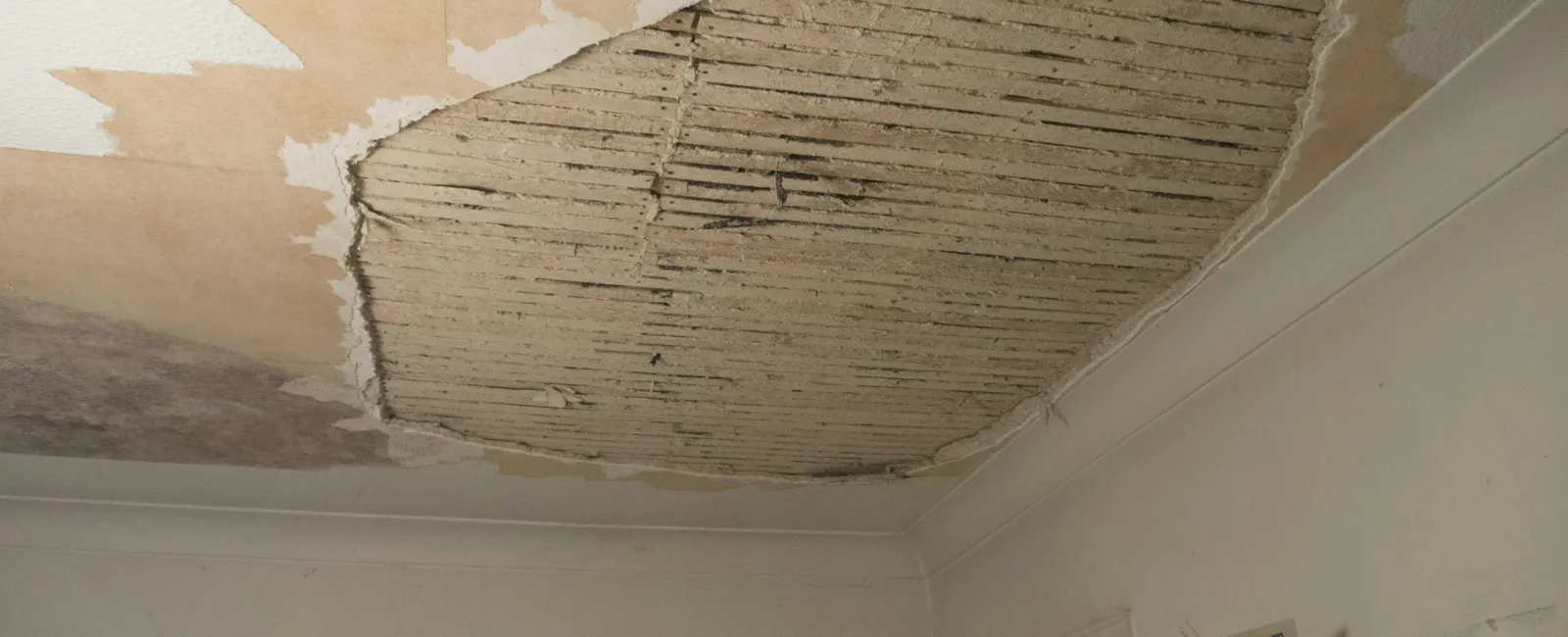Roof leaks are one of the most common roofing issues homeowners face. Left untreated, even small leaks can cause significant damage, from stained ceilings to mold growth and damaged insulation. Some signs are easy to spot, while others may go unnoticed without regular inspection.
If you are wondering how to tell if your roof is leaking, here are five signs to watch for and what to do if you suspect water is making its way inside your home.
1. Ceiling Stains
Brown, discolored patches on your ceiling are a clear sign that water is entering your home from above. These stains are usually caused by damaged shingles, deteriorated flashing, or worn seals around vents or skylights.
If you notice ceiling discoloration, do not paint over it without first addressing the source of the leak. Fixing the problem will prevent additional stains and future water damage.
2. Mold Growth in the Attic or Ceiling
Mold thrives in moist environments. If you find mold or mildew in your attic or around ceiling corners, a roof leak may be the cause. Moisture entering through the roof creates ideal conditions for mold to grow and spread.
While mold can also result from poor attic ventilation, an inspection can help you determine whether the issue is due to a leak. Either way, addressing the moisture source and removing the mold quickly is important for your health and your home.
3. Musty Odors Indoors
A musty smell in the attic or upper levels of your home often indicates the presence of trapped moisture or mold. Wet insulation, caused by a leak, can hold water and create strong, unpleasant odors.
If odors persist even after cleaning, check your attic and ceilings for signs of dampness. Insulation may need to be replaced along with the roofing repair.
4. Missing or Damaged Shingles
Shingles protect your home from water intrusion. If you notice shingles that are cracked, curling, or missing entirely, your roof may already be compromised.
Even if you do not see immediate signs of a leak indoors, water could be seeping slowly into the attic. Pay close attention to areas where shingles are visibly damaged, especially after severe weather.
5. Damaged Flashing or Roof Vents
Flashing seals the edges and openings in your roof, such as around chimneys, skylights, and vents. If it becomes loose, cracked, or corroded, it may allow water to slip beneath the roofing material.
Leaks caused by damaged flashing are sometimes difficult to trace because water can travel before appearing inside. Routine visual inspections after storms can help you catch these issues early before they lead to more serious damage.
How to Find the Source of a Roof Leak
If you suspect a leak but cannot see exactly where it is coming from, here are two ways to help locate the source:
Inspect the Attic
Look for water stains, mold, dark patches, or wet insulation. These signs can help narrow down the general location of the leak. Keep in mind that water often travels along beams, so the actual leak may not be directly above the visible damage.
Use a Hose Test (if safe)
With help from another person, spray water on the roof using a garden hose while someone inside the attic watches for signs of moisture. Focus on damaged areas such as shingles, flashing, or roof penetrations.
Only do this test if it is safe to access your roof. If not, skip it and contact a professional roofer instead.
What to Do If Your Roof Is Leaking
Once you confirm a leak, acting quickly is important to avoid further damage.
Call EXOVATIONS for Asphalt Roof Replacement
If you have noticed signs of a roof leak or are concerned about the condition of your roof, the team at EXOVATIONS is ready to help. We specialize in asphalt roof replacements designed for Georgia homes.
Call 770-766-5011 or schedule your inspection online today.
Let us restore your peace of mind with a durable, weather-resistant asphalt roof.
